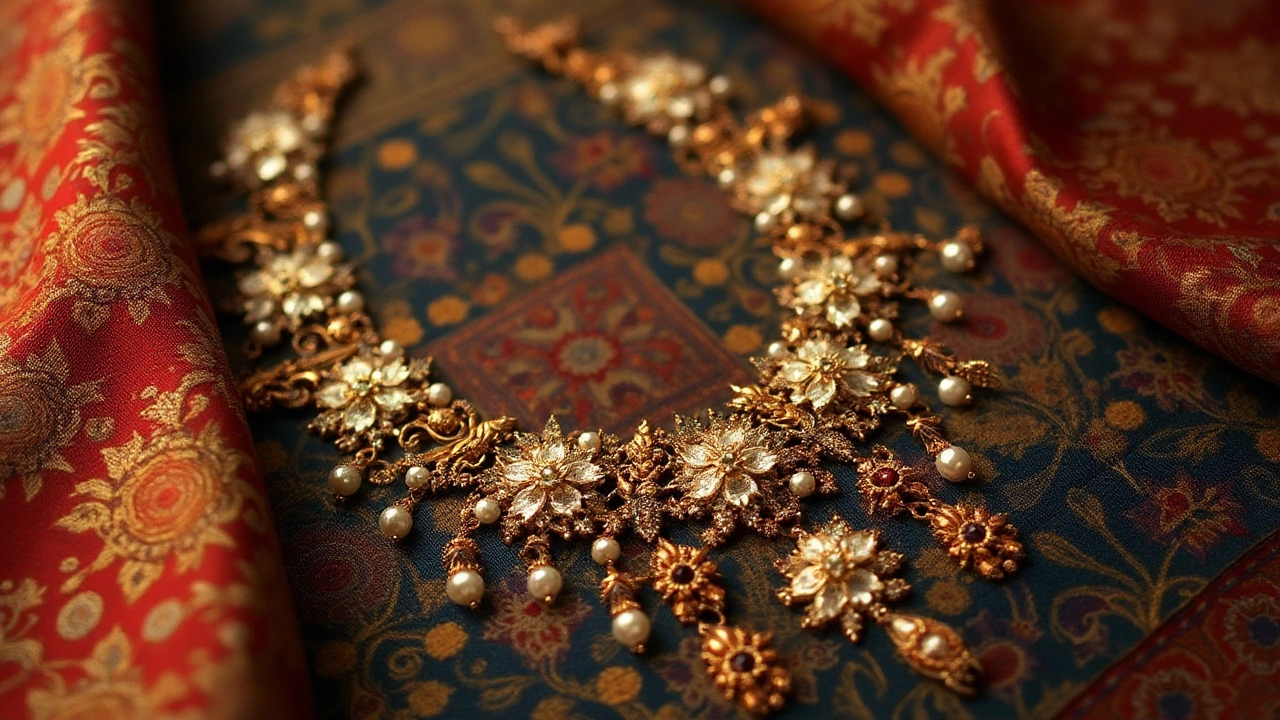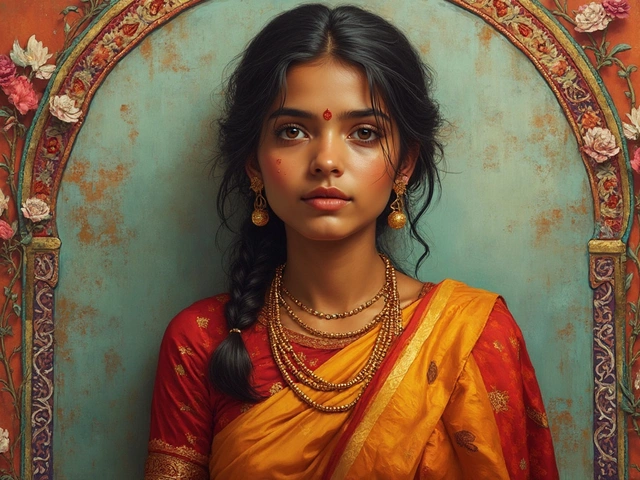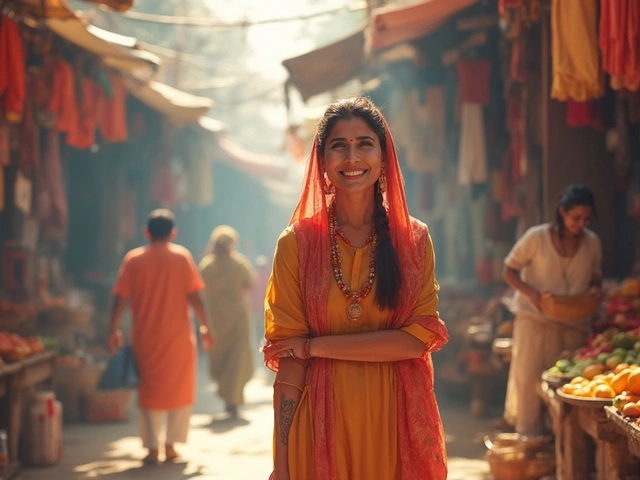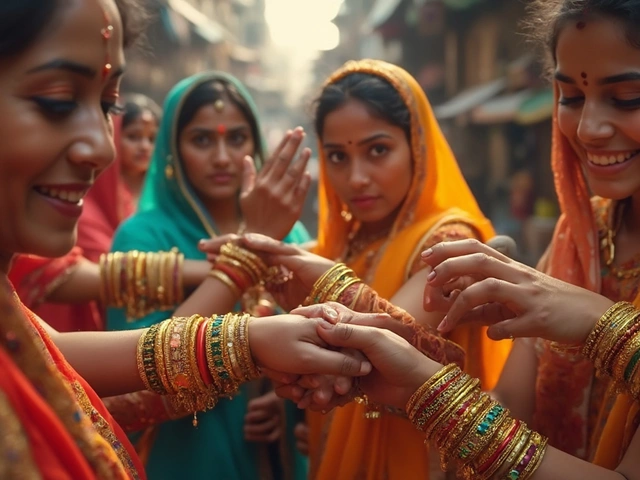Vintage jewelry captivates with its blend of history, artistry, and timeless elegance. These pieces are not just decorative; they offer a glimpse into the past, showcasing the craftsmanship and cultural influences of their time. Collectors and enthusiasts are often drawn to the allure of owning a piece that tells an intriguing story.
Understanding the types and eras that make certain pieces highly sought after can enhance one's appreciation and knowledge of these treasures. From the geometric allure of Art Deco to the romantic flourishes of Victorian times, each era has left its mark on the jewels cherished today.
- The Appeal of Vintage Jewelry
- Types and Eras of Sought-After Pieces
- Tips for Collecting and Valuing Vintage Jewelry
- Celebrities and Influential Figures in Vintage Jewelry
The Appeal of Vintage Jewelry
There’s something undeniably captivating about vintage jewelry that beckons both the seasoned collector and the curious enthusiast alike. These artifacts of adornment encapsulate not just the style of a bygone era, but also the stories of the people who lived through them. Their charm often lies in their craftsmanship, detailing, and the unique materials used that are rarely found in contemporary creations. Imagine wearing a piece that might have dazzled guests at a Gatsby-era party or graced the neck of a lady from the Victorian aristocracy. Each piece, from glittering brooches to exquisitely filigreed rings, has a part of history enshrined within its delicate form.
One of the most compelling facets of vintage jewelry is its sustainability. As the world becomes increasingly conscious of resource conservation, the notion of reusing and recycling precious artifacts gains prominence. This kind of antique jewelry design isn’t just about beauty; it’s also about preserving heritage. By opting for vintage, collectors are effectively voting for a form of glamour that leaves little imprint on today’s environment. These jewels, often crafted with superior materials and attention to detail, were meant to stand the test of time—quite literally family heirlooms that pass from generation to generation, carrying with them tales untold.
"Owning a unique piece isn’t just about the aesthetic; it’s about having a connection to a vivid history,” says jewelry historian Ella Perez, whose expertise spans across multiple eras of craftsmanship.
The rarity of certain designs and materials only boosts their allure. For enthusiasts, there’s thrill in the hunt for that perfect item, whether it be a geometric Art Deco bracelet or a fanciful Edwardian choker. This rarity ensures that those who do own certain sought-after items often find they've made a sound investment. And as the trends recycle every decade or so, the appreciation for these one-of-a-kind pieces only grows. Detailed appraisals and certifications often accompany high-end vintage purchases, primarily to assure authenticity and safeguard collectible values over time. Enthusiasts should also be mindful of key details such as age-appropriate clasps and markings that could hint at authenticity and provenance.
Lastly, there’s the social and cultural dimension. Celebrities and public figures have often played a significant role in reviving the popularity of vintage jewelry, frequently choosing to wear them at major events, bringing these timeless treasures back into the public eye. The compelling history, exquisite craftsmanship, and sustainable advantages make vintage jewelry an enduring testament to elegance, sustainability, and individuality. As these pieces continue to captivate new admirers, their legacy ensures that they remain relevant amidst ever-changing trends and tastes.

Types and Eras of Sought-After Pieces
The world of vintage jewelry is as vast and varied as the history it represents. Each era presents its unique characteristics and flair, capturing the essence of its time. One remarkable period is the Victorian era, spanning from 1837 to 1901. Jewelry from this time often combines sentimental motifs and elaborate designs. Pieces may feature flowers, hearts, and lockets, crafted in gold with delicate engravings. They reflect the personal and romantic nature of the period, a time when jewelry was not just adornment but a symbol of connection and sentimentality.
The Edwardian era, from 1901 to 1910, follows the Victorian. Characterized by an emphasis on elegance and refinement, jewelry from this time often employed platinum, allowing for intricate lace-like designs. Diamonds and pearls were favorites, enhancing the soft, graceful aesthetic. These pieces frequently carried the influence of neoclassical themes, showcasing delicate scrolls and filigree work.
Moving into the 1920s and 1930s, the Art Deco period introduces a bold departure from its predecessors. Known for its geometric patterns and vivid colors, Art Deco jewelry is often set with colorful gemstones like onyx, emeralds, and rubies. The designs embrace symmetry and streamlined forms, encapsulating the modernist spirit. It's no surprise that these striking pieces remain in high demand among collectors.
Art Deco jewelry represents the juxtaposition of bold designs and new industrial age technology. – Sotheby’s
The 1940s and 1950s witnessed the Retro period, marked by a return to opulence after the austerity of World War II. Jewelry from this time exhibited large, bold statement pieces. Gold became the dominant metal, often crafted in rosy and yellow hues. The design focused on sculptural curves and three-dimensional forms, adorned with abundant gemstones, often incorporating humor and creativity into the motifs.
Lastly, the 1960s and 1970s encapsulated the vibrant and eclectic nature of the mid-century era. This period brought an explosion of creativity, merging cultural and artistic influences from around the world. Costume jewelry saw a rise in popularity alongside traditional materials. Designers experimented widely with their approaches, incorporating a variety of textures and unusual materials. Jewelry transitioned from purely decorative to an expression of individual identity, setting the tone for future fashion trends.
Understanding these types and eras enriches one's journey into collecting vintage jewelry, offering a deeper connection to the stories and artistry captured in each piece. Each era contributes something unique to the canvas of history, reflecting changing tastes, technologies, and societal shifts.
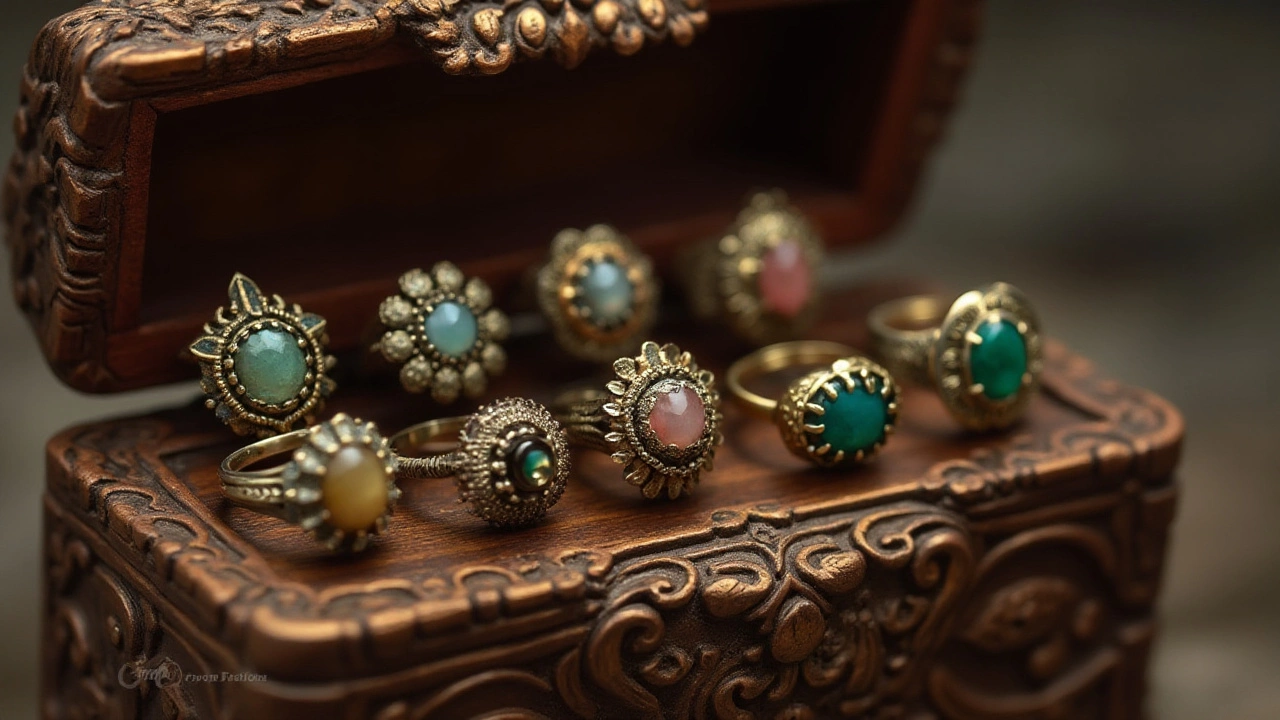
Tips for Collecting and Valuing Vintage Jewelry
Embarking on the adventure of collecting vintage jewelry is as rewarding as it is challenging. It's important to equip yourself with knowledge before diving in. A good place to start is by familiarizing yourself with key periods in jewelry history, such as Victorian, Art Deco, and Mid-Century, each with distinct characteristics. Understanding the hallmark styles and materials of each era helps you to identify genuine pieces. For instance, Art Deco pieces are known for their geometric designs and use of platinum, while Victorian jewelry often features intricate designs and colored gemstones. Investing in a comprehensive guidebook or taking an online course can significantly deepen your understanding.
One valuable tip is always examining a piece closely, keeping an eye out for maker's marks and hallmarks. These inscriptions can reveal important information about the origin, age, and authenticity of the item. It's crucial to have a keen eye for details like wear, repairs, and modifications that could affect a piece's value. Many seasoned collectors carry a jeweler's loupe, a small magnification device that helps inspect jewelry elements up close. Understanding the difference between a genuine piece and a reproduction is essential in avoiding costly mistakes. As jewelry expert Georgette Melvin once said,
"True vintage jewelry isn't just about age — it's a story frozen in gold and gem."
Building relationships with reputable dealers is another important step. Trusted sellers can provide assurance that the items are authentic, and they can often guide you towards pieces with excellent historical value. Consider visiting antique fairs, estate sales, and auctions, which are treasure troves of opportunity. Engaging with communities of fellow collectors can be tremendously beneficial too, whether online or through local clubs. These gatherings can serve as fertile grounds for learning and exchanging tips. A seasoned collector might suggest attending prestigious events like the Miami Beach Antique Show or the New York Antique Jewelry & Watch Show, where quality and authenticity are paramount.
Understanding the present market trends and valuations is crucial when collecting vintage jewelry. Each piece's worth can fluctuate based on factors like demand, rarity, and condition. Staying informed through appraisal services can aid in assessing your collection's value. An informative practice is maintaining detailed records of your acquisitions, including receipts and certificates of authenticity, which prove indispensable for future appraisals and insurance purposes. In today's digital era, various websites and online forums can offer price comparisons and prevailing market rates, allowing you to judge whether you're investing wisely or need to hold back. Moreover, some collectors recommend subscribing to industry publications or newsletters, where expert insights on market dynamics and forecasts can illuminate paths for budding and experienced collectors alike.
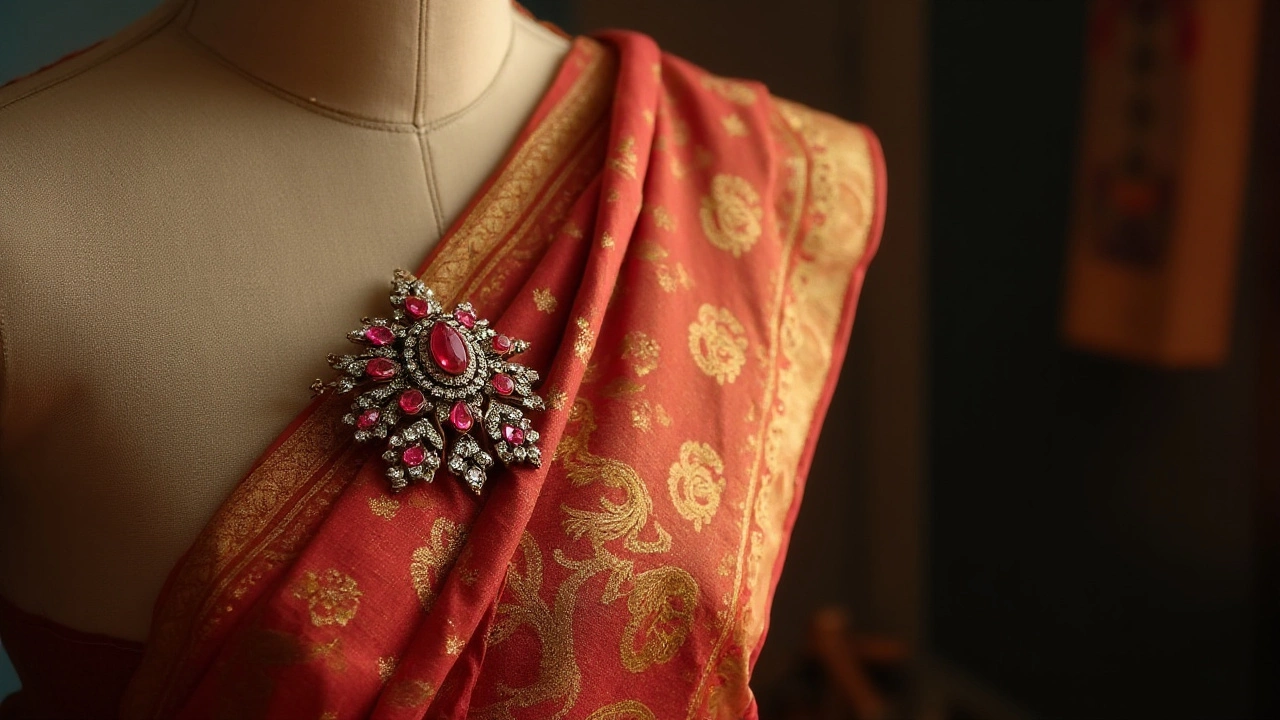
Celebrities and Influential Figures in Vintage Jewelry
It's no secret that celebrities have long played a pivotal role in setting fashion trends, and vintage jewelry is no exception. Many stars and iconic personalities have sported these timeless pieces, captivating audiences and collectors alike. The allure of vintage jewelry transcends time and relevance, as it often graces the red carpet, film premieres, and high-profile events, shimmering in the media spotlight. From classic Hollywood actresses to modern-day icons, the influence of celebrities in making vintage pieces highly sought after remains substantial.
One cannot discuss vintage jewelry without mentioning the legendary Elizabeth Taylor, whose passion for exquisite jewelry is well-documented. Known for her impeccable taste, Taylor's collection included some of the most renowned vintage pieces, such as the famous Krupp Diamond, now known as the Elizabeth Taylor Diamond. Her love for unique and historic jewelry pieces was as legendary as her cinematic career, leaving a profound impact on jewelry enthusiasts worldwide. Iconic photographs of Taylor adorned in her collection continue to inspire design trends even today.
Modern celebrities have also embraced vintage jewelry, adding their flair and modern twist. Kate Middleton, the Duchess of Cambridge, often graces public appearances wearing vintage pieces, further boosting their popularity among royals and commoners alike. Her choice to wear the late Princess Diana's iconic sapphire engagement ring has not only kept the legacy alive but has also sparked a renewed interest in sapphire jewelry across the globe, reinforcing the timeless appeal of such jewels.
Other influential figures include powerhouse music artist Beyoncé, who often intertwines modern high fashion with vintage jewelry, showcasing pieces that meld the charm of past eras with contemporary aesthetics. Beyoncé's style choices, lauded by fashion critics, demonstrate how vintage jewelry can elevate an ensemble, emphasizing its versatility and enduring allure.
"Vintage jewelry pieces are more than just accessories; they are a form of art that carries whispers of history and cultured elegance," said renowned fashion historian, Dr. Caroline Stone.
Beyond individual celebrities, entire fashion movements have been inspired by vintage jewelry, with designers incorporating vintage motifs into modern collections. These design choices, often showcased on runways and adopted by fashion influencers, have led to a resurgence of interest among younger generations. As society becomes increasingly conscious about sustainability, the idea of repurposing and valuing older, handcrafted items aligns well with contemporary values, making vintage jewelry connect deeply with today's audiences.
Indeed, from Hollywood legends to modern fashion icons, the influence of celebrated names on the desirability of vintage jewelry vividly illustrates the symbiotic relationship between style, history, and personal expression. Each wearer adds a chapter to the ongoing narrative of these cherished pieces, thus not only preserving their value but enhancing it with every generation. Celebrities, by drawing attention to these jewels, continually reinforce their status as sought-after treasures, inspiring collectors and style enthusiasts to appreciate and aspire to own such lasting tokens of elegance.
